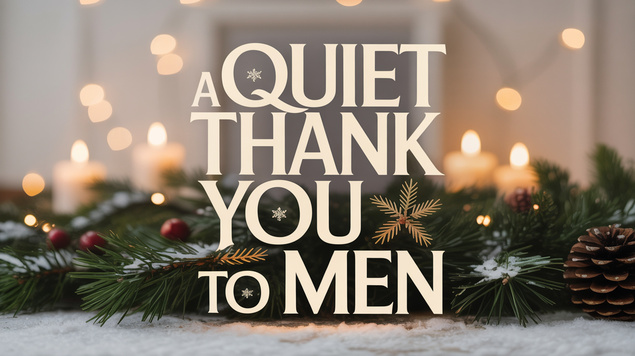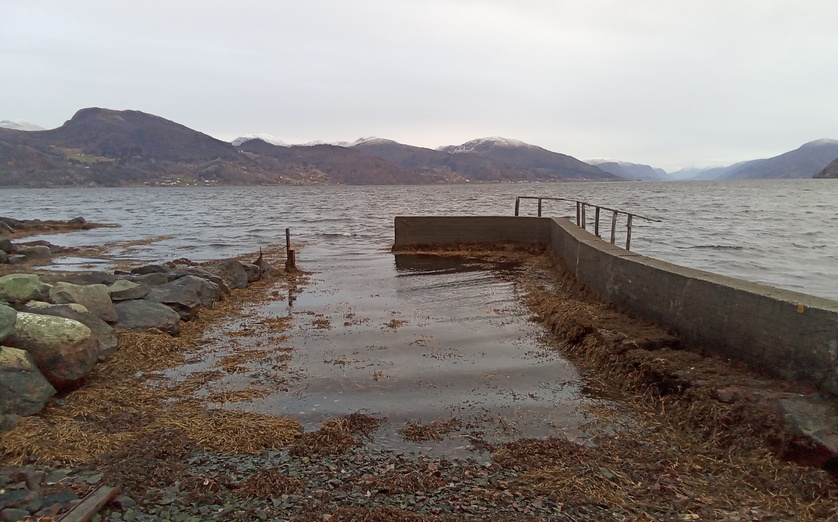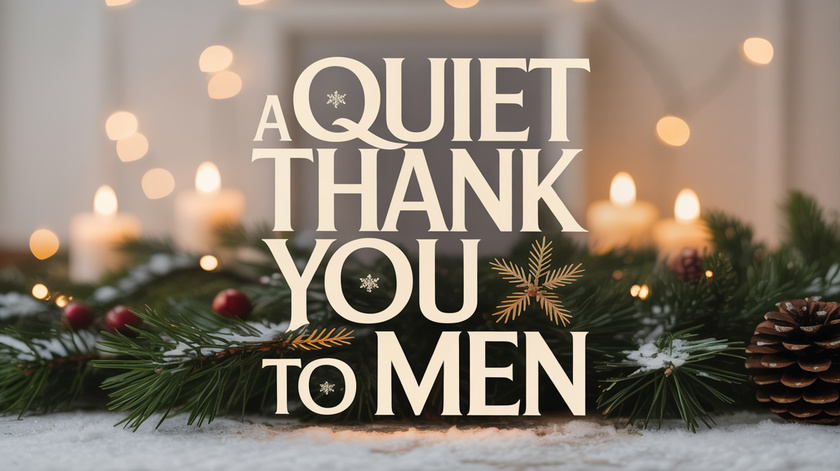This is the work of Moiret Allegiere, one of my favorite writers on men’s issues. His insights and depth of understanding about the issues men face have great depth. He recently became a father and this is a short article on his fatherhood. I hope you enjoy it as much as I did. His bio below will include ways to find more of his work.
Nature and Nurture
I have absolutely no idea where all that time went. Our son, whom I am willing to swear on all that I hold holy was born only yesterday, will turn three in February of 2024. This is weird. One of those great lessons to be learned from parenthood, I assume: time is precious, and it flies by so quickly that – if the Gods are willing – we’ll be grandparents before we know it. A concept equally terrifying and exhilarating.
There is a lot of work to be done when trying to get a farm that has been derelict for decades up and running again. Grass needs to be cut, trees must be taken down, the house needs upgrades, the barn needs cleaning, and so forth and so on. Fields have become overgrown that should have been tended to ages ago. The forest is reclaiming fields where sheep and goats once walked. All must be tended to and cleaned, and old farm-equipment and older farm-buildings must be repaired. It seems to me to be a situation that never strays far from complete and utter chaos, barely kept under control by the savage hands of a soon-to-be middle-aged white guy, who’s fondness for the axe is only overshadowed by his fondness for the chainsaw. And amidst all this, we willingly brought an agent of chaos into the mix. For that is precisely what a toddler is. And what he is supposed to be. It is for us, his parents, to teach him to find order and thus become ordered. Albeit without ever entirely loosing grip of that chaos. For chaos controlled breeds creativity, breeds needed change, breeds an elegant desire to reach beyond the borders of the ordered to explore the world as of yet uncharted by our son; his eyes, his mind, his body and his soul. There can never be a life wholly fulfilled without order and chaos working together to create wonder and to create clearly defined and much needed borders.
Where we live, we are lucky to be surrounded by nature. We have tall mountains, dark forests, fjords and shorelines. We have tall trees, dark soil, rocks and plants. All things to be explored and to be conquered and then used by our son – our very own bundle of chaos – to understand the world and his place within this world.
When the weather and my energy-levels allow, which apparently is most days, whether or not my energy-levels or the weather allows it, our son and I go for a walk outside. I have long since given up any notions of being the boss of our household. That duty falls solely on our pint-sized tyrant, whose energy seems to peak just around that time of day when my own energy dwindles. This, of course, is exactly as it should be. He is a young boy, and his kinetic energy must be spent and it must be celebrated, just as much as his natural curiosity must be explored, expanded and rewarded.
Some weeks ago, I took him down to the boathouse. The idea was to throw rocks into the fjord. Because throwing things are remarkably fun. Better he throws rocks about outside than to throw his toys about inside. I assume most will agree. However, as fortune and the weather would have it, there was a very high tide when we went down to the boathouse. All the rocks, I told him, had been eaten by the water. But, fret not my son: look at the waves coming in, isn’t that exciting?
There was a strong wind that day. There often is. And so we stood there, besides our run-down boathouse, just watching the waves coming in, crashing and receding. We did the same thing a little over a year ago, but he was way more consciously curious about everything now. There they came: tall waves, strong waves. Crashing and receding. And our son filled with awe at this wonder. So we stood there for three quarters of an hour, watching the waves, giggling with joy and excitement when the waves crashed just hard enough to splash us.
“I got wet!”, he proclaimed.
“More?”, he continued.
“You’ll just have to wait and see if another big wave comes.”, I said, holding his small hand in one hand, gently resting my other hand on his tiny shoulder.
“Big wave!”, he said.
Sure enough, another big wave came. And the giggling. And the process repeated, with slight variations, for the aforementioned forty-five minutes.
We tend to get used to these small wonders when we experience them enough. When one has become a mature adult, there is an unfortunate tendency to no longer see all this wonder that lies about oneself. The world is full of things that are, essentially, exciting and incredible. Deliriously so, if one opens ones mind to it and manage to experience it from the level of a child. The wonder a child shows about everything in the world is, undoubtedly, an essential part of childhood. One would be insane to propose otherwise. When everything is new, is experienced for the first time… or the first couple of times, it can not possibly be anything but wonderful. Marvellous. Miraculous, even. And this experience of the natural world, separated from the marvels of modern engineering… removed from the everyday miracles that make up the machinery of modern society… this experience of nature is one of the greatest gifts I could give my son. And his enthusiasm, his childish wonder and amusement at all these small things which I find I once took for granted, touches me and makes me once again see things from the level of a child, makes me appreciate the wonders that surround us more than I have done in years upon years. And here I thought I was the one supposed to teach him things, not the other way around. It just goes to show, I suppose.
No wonder then that the day after the experience with the waves, he wanted to return to the boathouse and the fjord and to “See big waves!”, as he so eloquently put it.
“Of course we can go down to the fjord again,” I told him, “but I’m afraid there won’t be that many big waves today.”.
“See big waves!” he repeated.
Fair enough, I thought. Guess this’ll be a lesson for later.
So we went back down to the boathouse. And our son was disappointed. Absolutely crestfallen, in fact, when he saw that there were no waves to splash him, no big waves to marvel at, no strong winds. Nothing but small waves.
“Dad make the big waves come!”, he said.
“No, dad can’t make the big waves come. The big waves do what they want to do.”
“Dad make the big waves come!”, he repeated, demanding. Getting upset now, preparing a tantrum. Oh man, oh shit, oh no! For this, I admit, I was ill equipped. Your father, young one, is neither God nor a force of nature (except when it comes to chopping wood). But how does one explain this to someone who is of the opinion that parents are the ones to fix everything?
That’s when it hit me – what small waves there were was gently lapping at the rocks.
Oh, man, the rocks!
He had forgotten about the rocks, it appeared.
“Look at what the waves left us yesterday.”, I told him.
“Waves haven’t eaten the rocks!”, he proclaimed, eyes bright with that wonderful light that only the eyes of children have, face glowing with that beautiful smile of his.
And so we spent an hour or so throwing rocks into the water. He of course making sure to splash me. Me, of course, not being allowed to splash him. This is, after all, the natural order of things. Not to worry though – I am able to read him, and so I splashed him a couple of times. He giggled, of course. Much like he does when I tickle him. “Don’t tickle me!”, he’ll say. And then I’ll stop and he’ll ask me to continue. I’m sure he learns something from that, though I have no idea what.
He’ll ask to go outside everyday, despite having been to kindergarten and spent hours outside already, playing with other kids. The kindergarten he attends have a very strict policy, you see – they are of the belief that free play is the greatest tool children have for learning, and so that’s mainly what they do. Which is absolutely fantastic. And I try to accommodate these wishes of his to the best of my abilities. For it is doubtlessly important for our son to spend time in nature, marvelling at it. And it is important for him to have quality-time with his dad just as much as it is important for his dad to have quality-time with him. And what better way to get that than by exploring nature?
With luck on our side, he’ll grow up with a deep appreciation for nature, and an even greater respect and admiration for it. With even more luck, he’ll learn to nurture and to cling to that natural curiosity and that natural wonder so that it does not fade away, so that it does not get replaced with a world-weary cynicism. I want him to view the world and all that surrounds us with wonder, amazement, appreciation and respect. This might be the greatest gift I can give him. Which is funny, in all honesty. For his greatest gift to me is the exact same thing.
Moiret Allegiere
Moiret Allegiere (Born 1986) hails from Norway. A self-described scribbler of lines, juggler of words and weird pseudo-hermit, he became so concerned with the state of the world that he left his long and deliberate hibernation to wreak bloody havoc on the world of fine art and literature.
moiretallegiere.wordpress.com/




















